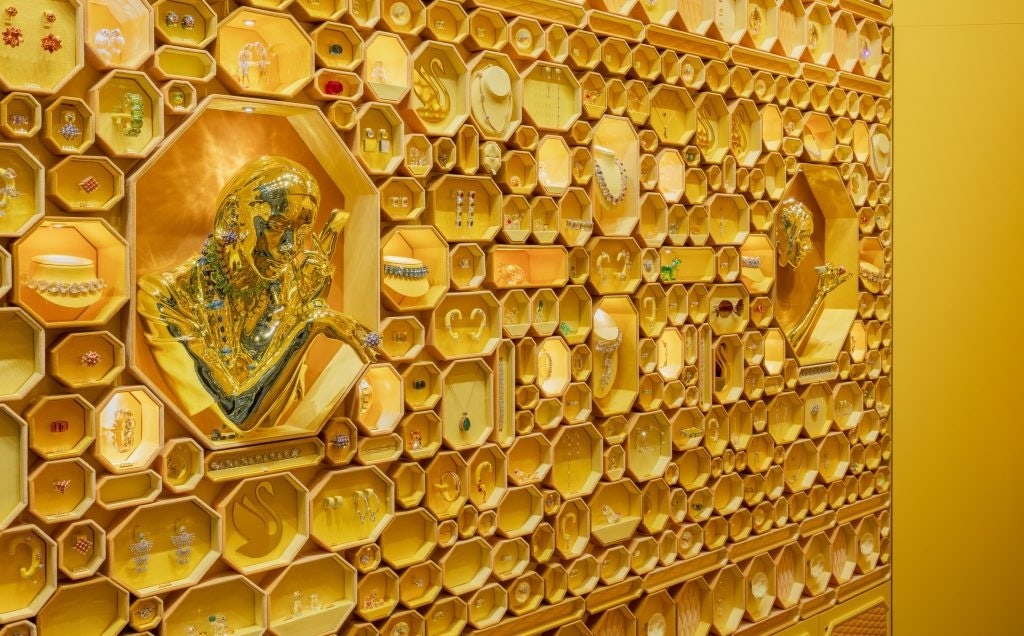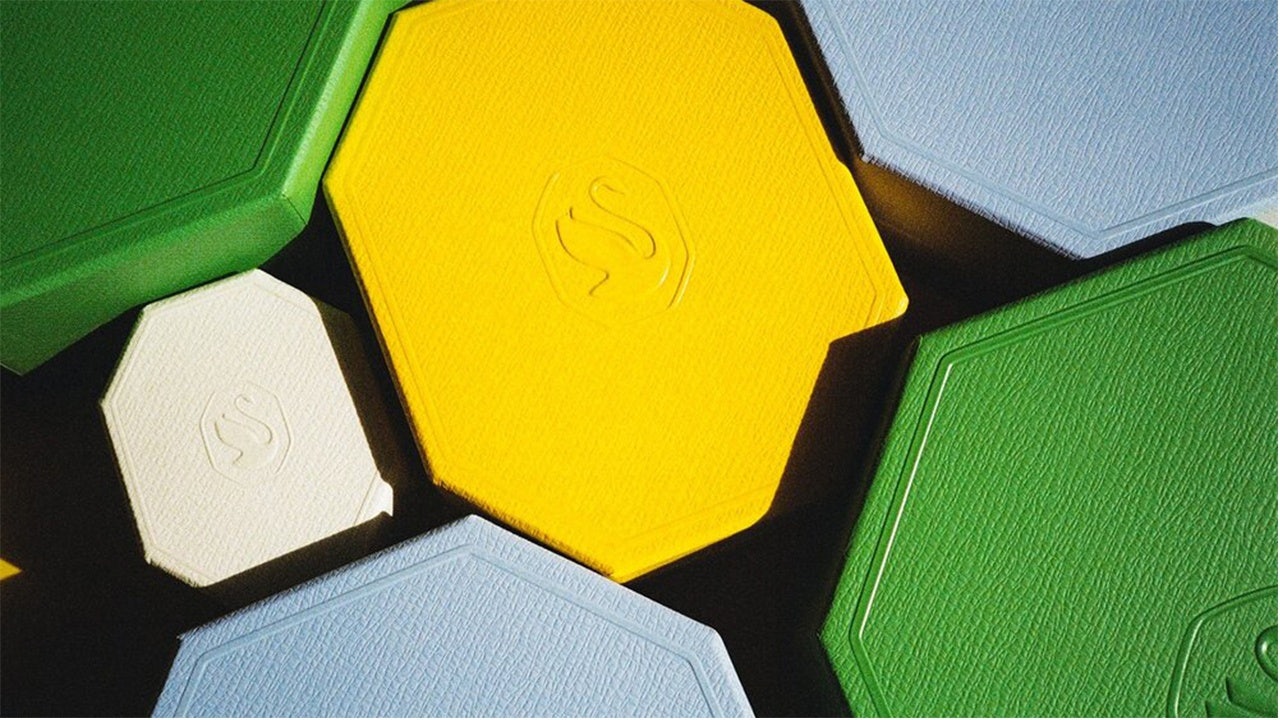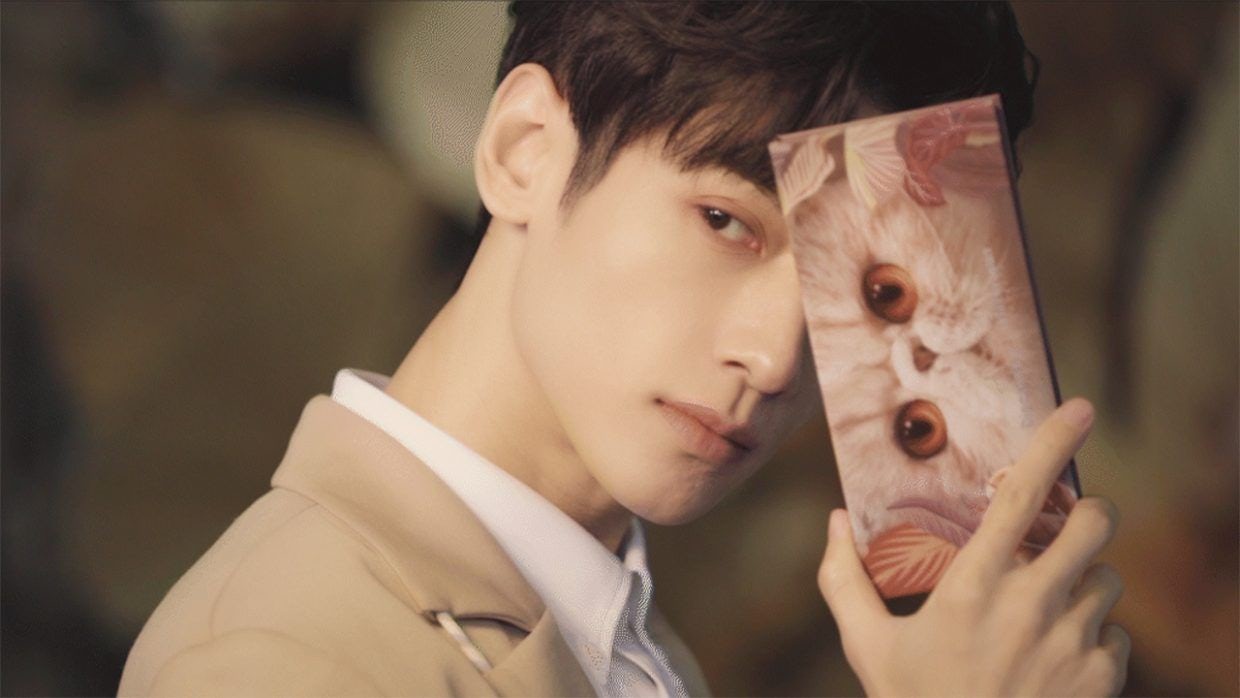Recently, Austrian crystal giant Swarovski teased its total brand makeover via short video, offering a sneak peek at its first major overhaul in more than three decades. Spearheaded by Agency General Idea (which has previously worked with Loro Piana, Moncler, and Louis Vuitton), the brand refresh reflects the influence of Giovanna Engelbert, who was appointed as Swavorski’s first-ever creative director last year. General Idea founder Ian Schatzberg told Marketing Brew that the new look was “born out of Giovanna as a designer, her vision, and her world. It’s a creative director-led brand now, and we worked in partnership with her.”
The “Wonderlab” short film stars model Adwoa Aboah, Gwendoline Christie (of “Game of Thrones” fame), and Isla Johnson from Netflix’s recent hit, “The Queen’s Gambit” (playing chess with crystal pieces, naturally). The broader rebrand, set to be fully unveiled on March 19, revolves around a colorful revamp of the traditional Swarovski packaging and a new swan logo.
Based on the brand collateral that has been released so far, it looks like Swarovski’s new look is China-facing, if not China-inspired. Last year the Chinese market offered a rare bright spot for luxury and premium fashion, and 2021 is expected to remain challenging for the industry as a whole, meaning that the competition to stand out among China’s increasingly important millennial and Gen Z consumers will take on even more urgency.

Last year, in an effort to appeal to younger demographics, Swarovski tapped the hugely popular Gen Z idol Wang Yibo as brand ambassador. Wang served as the face of Swarovski’s Women’s Day campaign, and shared a video message to promote a line of limited-edition crystal-studded jewelry that included the letters Y, I, B, and O that was quickly snapped up by his fans. In November, Wang helped the brand launch a collection of limited-edition pieces for the November 11 Singles’ Day sales and appeared in a series of short films to introduce the collection, which proved to be one of the most popular limited edition sets of the season, with fans sharing screenshots of their order confirmations to show their support for the idol.
The bold, colorful nature of Swarovski’s refresh will appeal to young shoppers in mainland China. As we have seen from domestic brands beloved by China’s Gen Z — among them Perfect Diary and Hey Tea — strong splashes of color and playful designs, when paired with affordable price-points and the right celebrity or influencer partnerships, are a winning combination. And now, what works among younger millennial and Gen Z consumers in China is also proving to work globally, such as Douyin/TikTok (even though TikTok, for now, has fewer features than its Chinese counterpart).
Now, one question is who Swarovski plans to work with in China to promote its new look — whether it will stick with the tried-and-tested Wang Yibo or enlist new faces, or whether the global Wonderlab campaign will be enough of a draw for young Chinese consumers, who are also huge fans of “Game of Thrones” and “The Queen’s Gambit” (the latter was the highest-rated English-language TV series of 2020 on the Chinese review site Douban). Another question is whether the brand makeover will be enough to help the family-owned Swarovski better compete against Tiffany & Co., which was recently acquired by LVMH and has already spent more than a decade expanding in China to corner the affordable jewelry market.
It also remains to be seen how the full unveiling of the brand refresh goes over in China. What has been teased out so far hasn’t been completely without criticism, with some netizens expressing a preference for the old logo, which was more recognizable and implicitly high-end, while others commented that the changes makes Swarovski look less like a premium jewelry brand and more like a “two-yuan shop on the side of the road.” Can’t please everybody.
This post originally appeared on Content Commerce Insider, our sister publication on branded entertainment.


